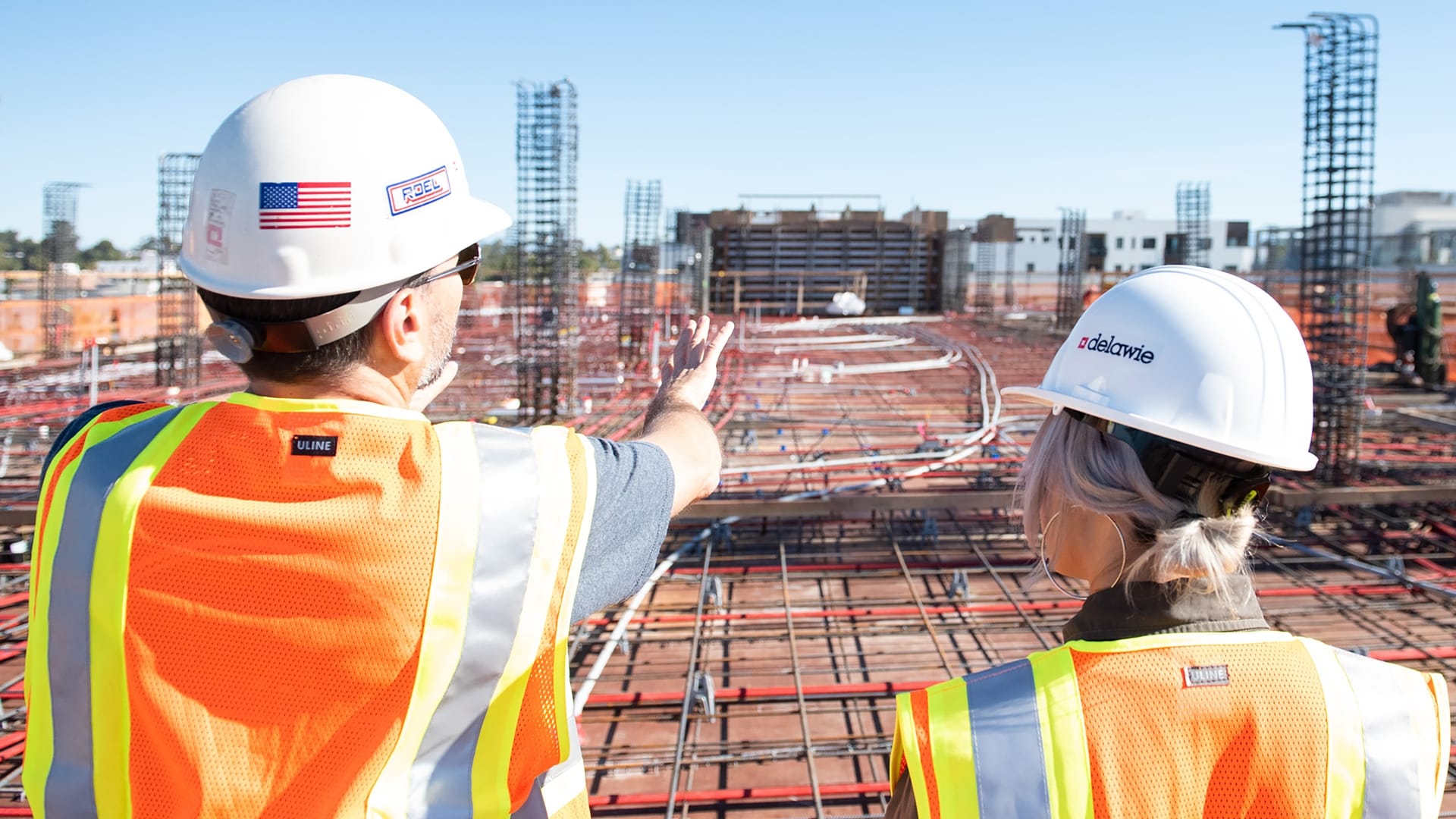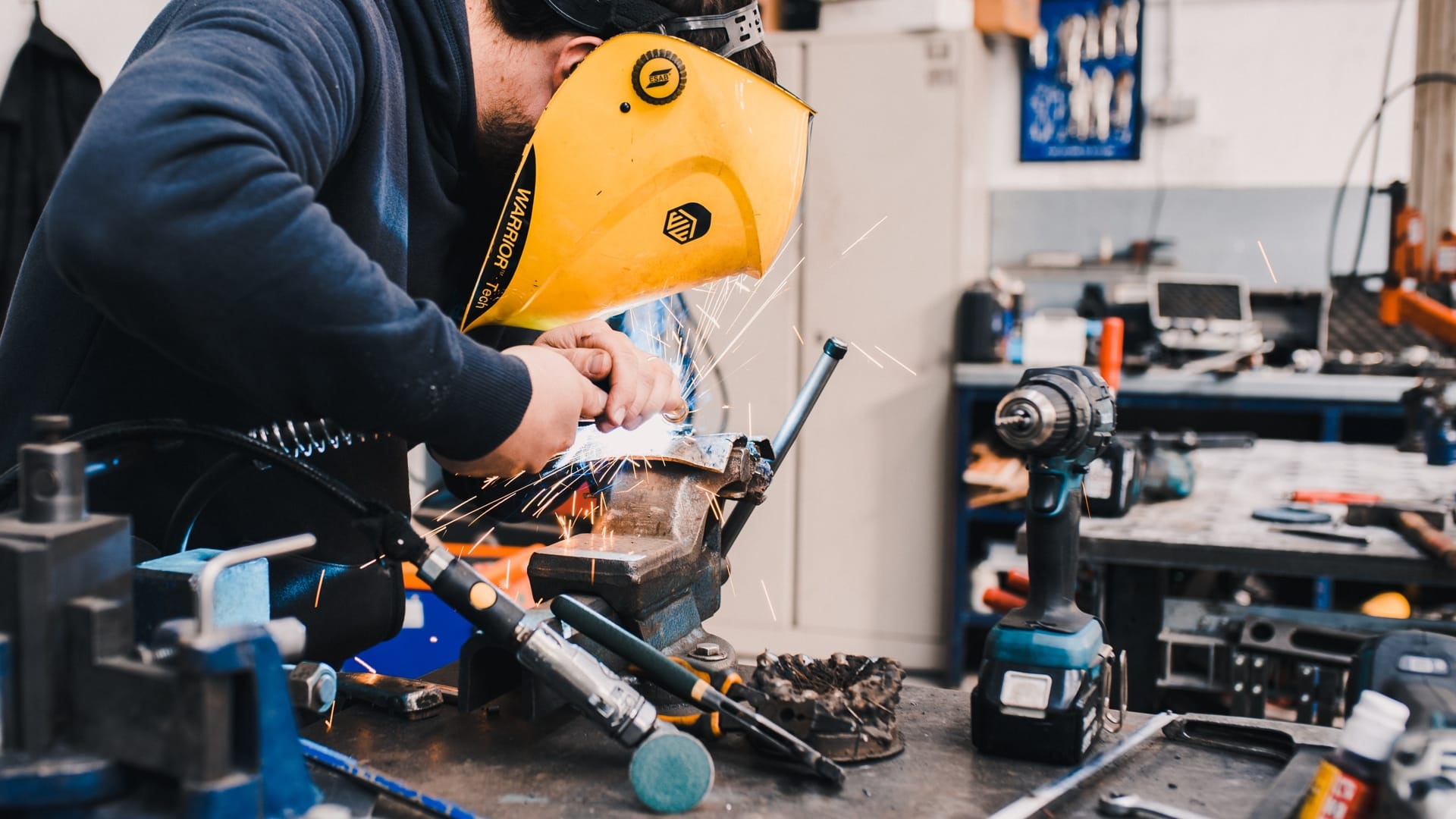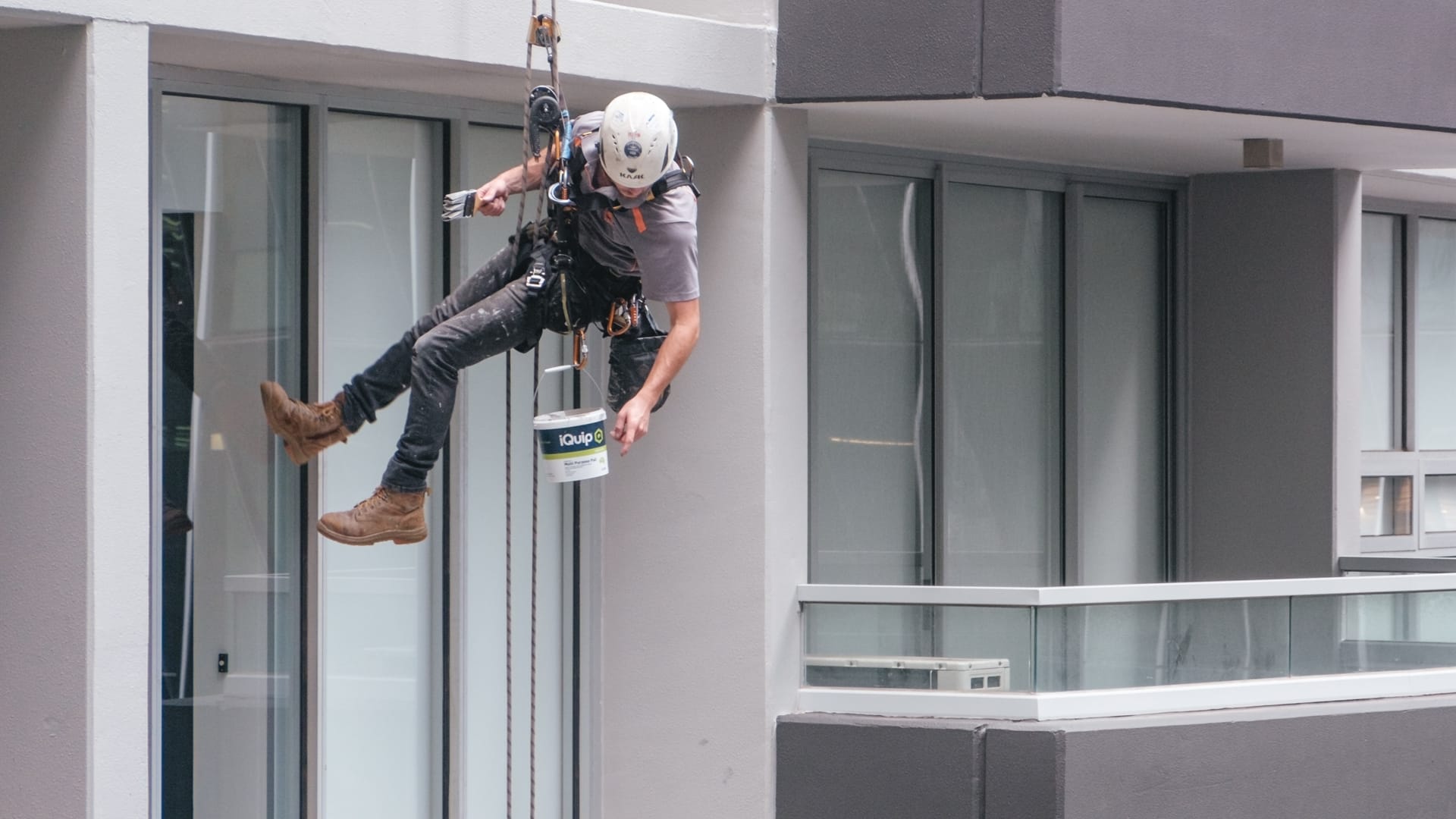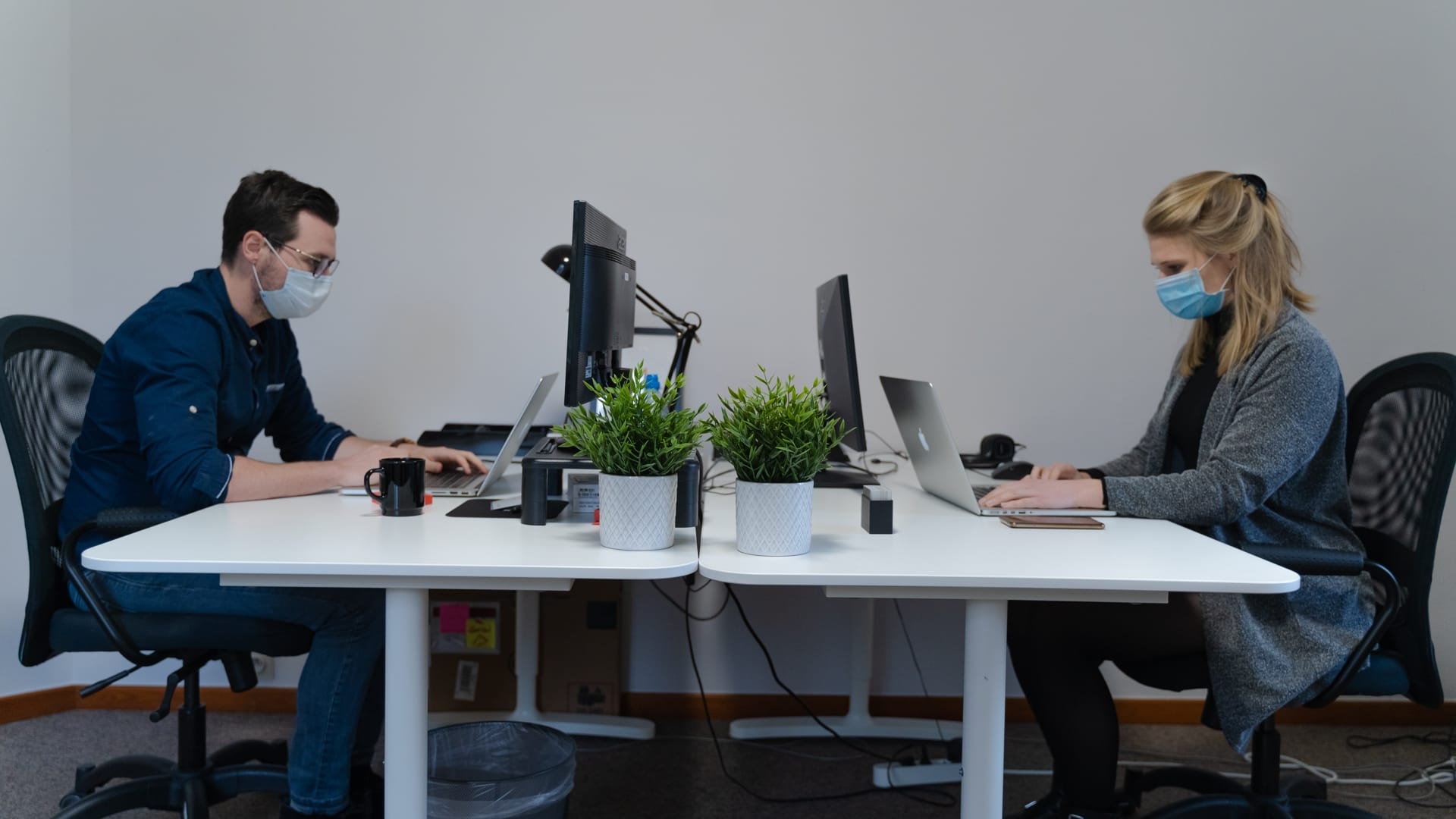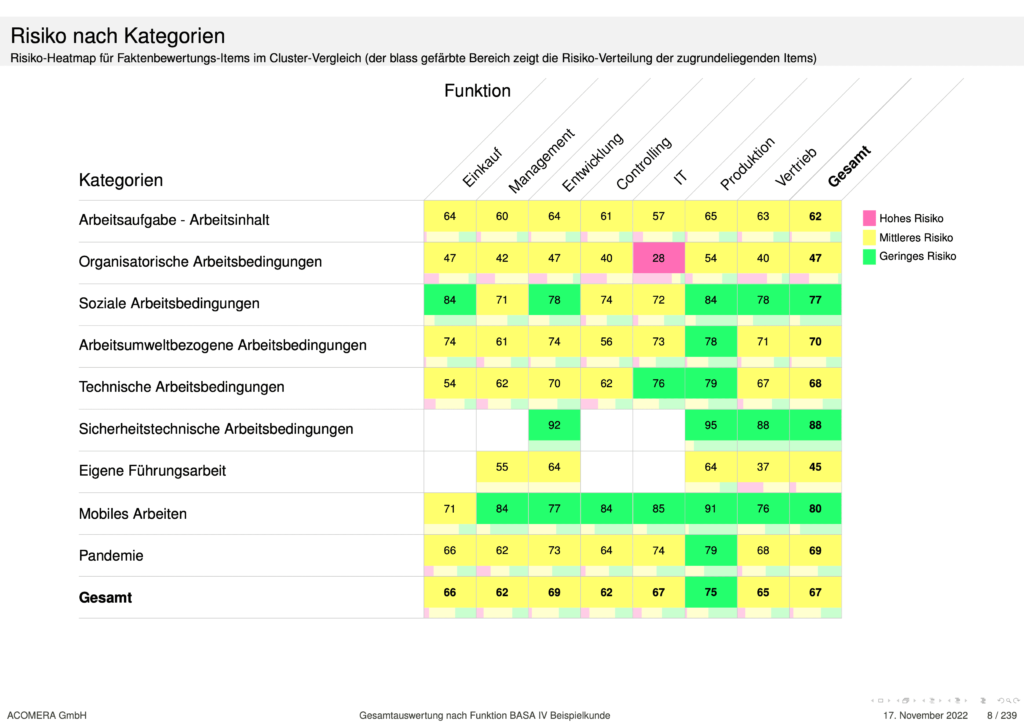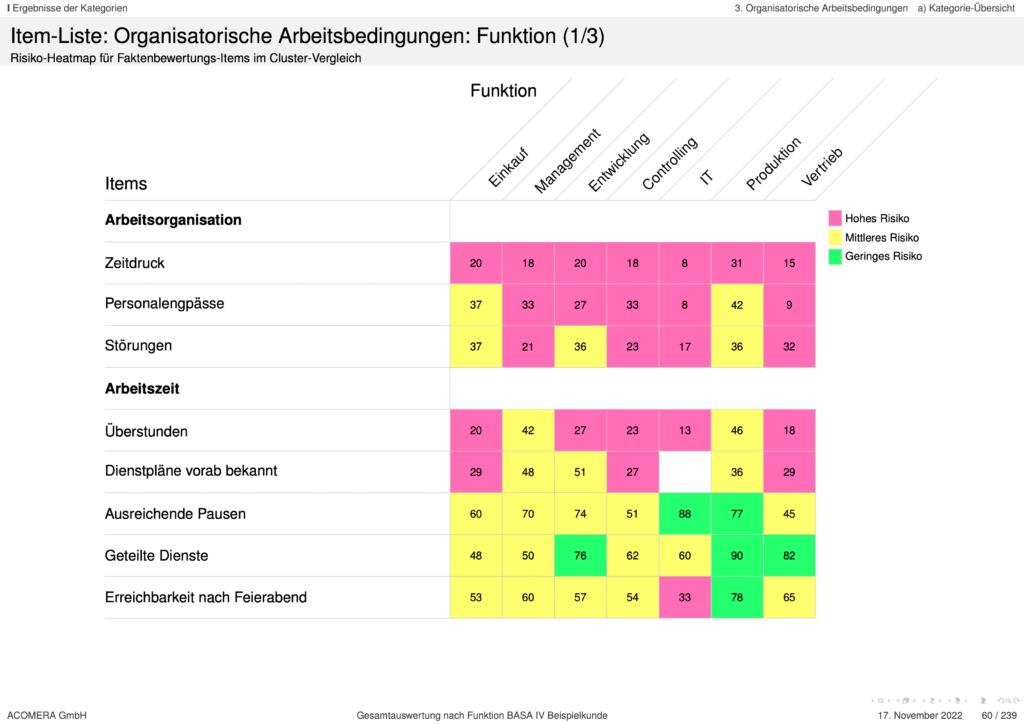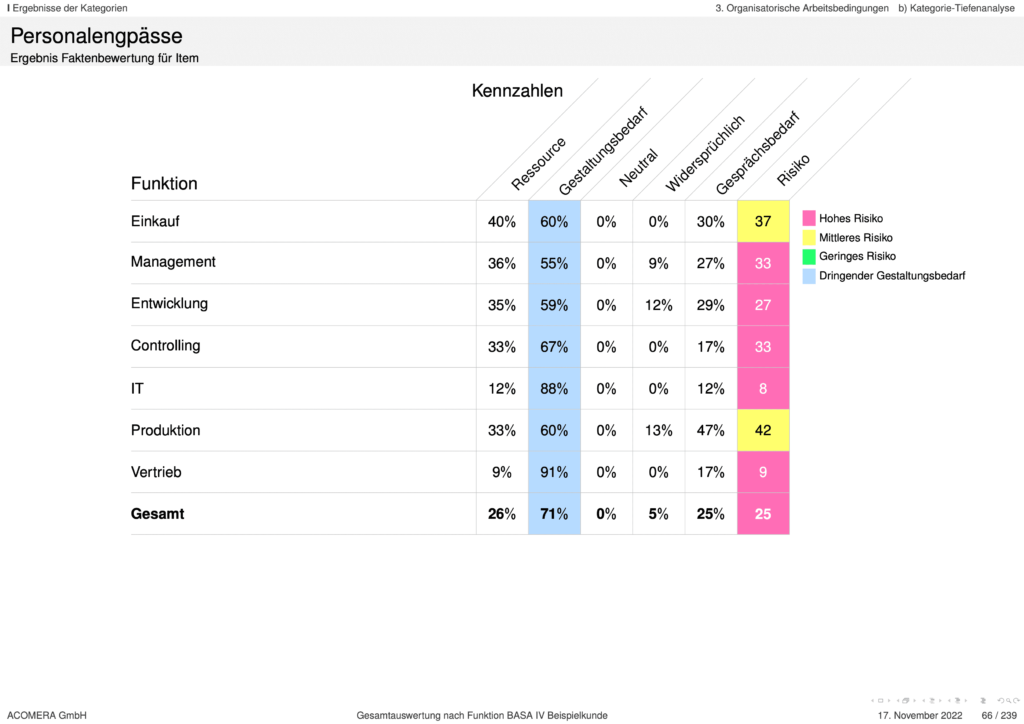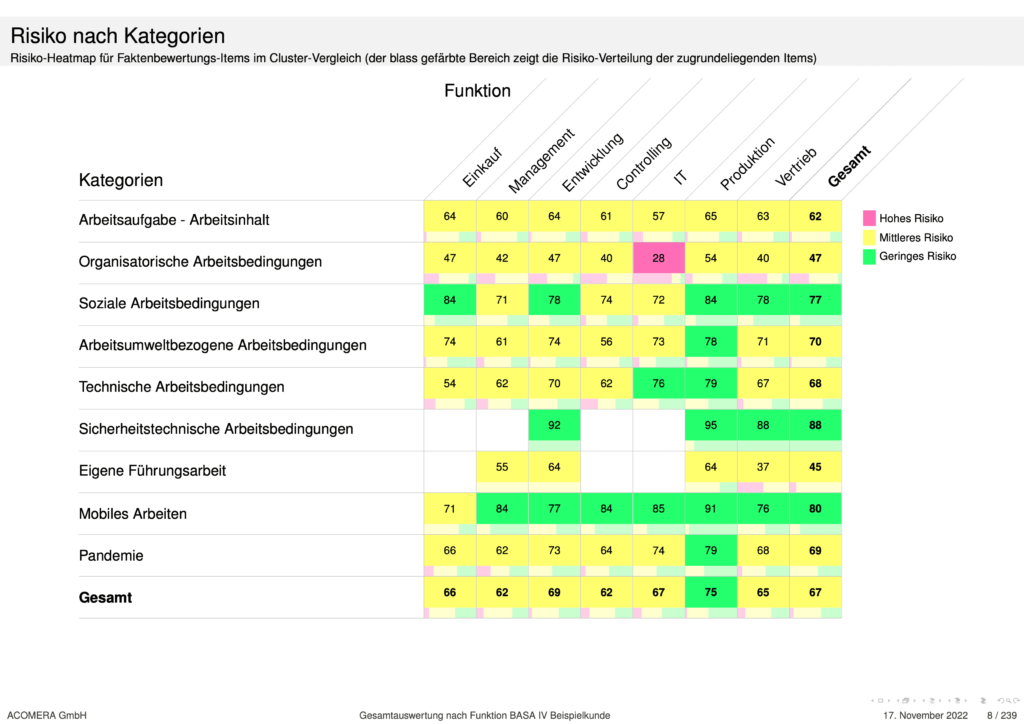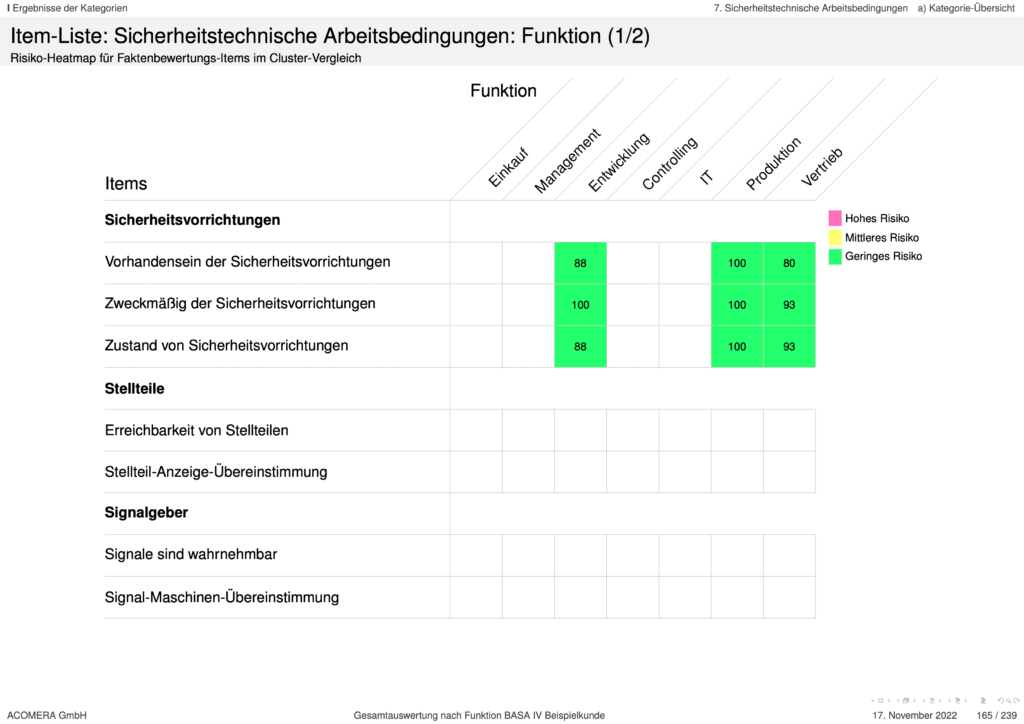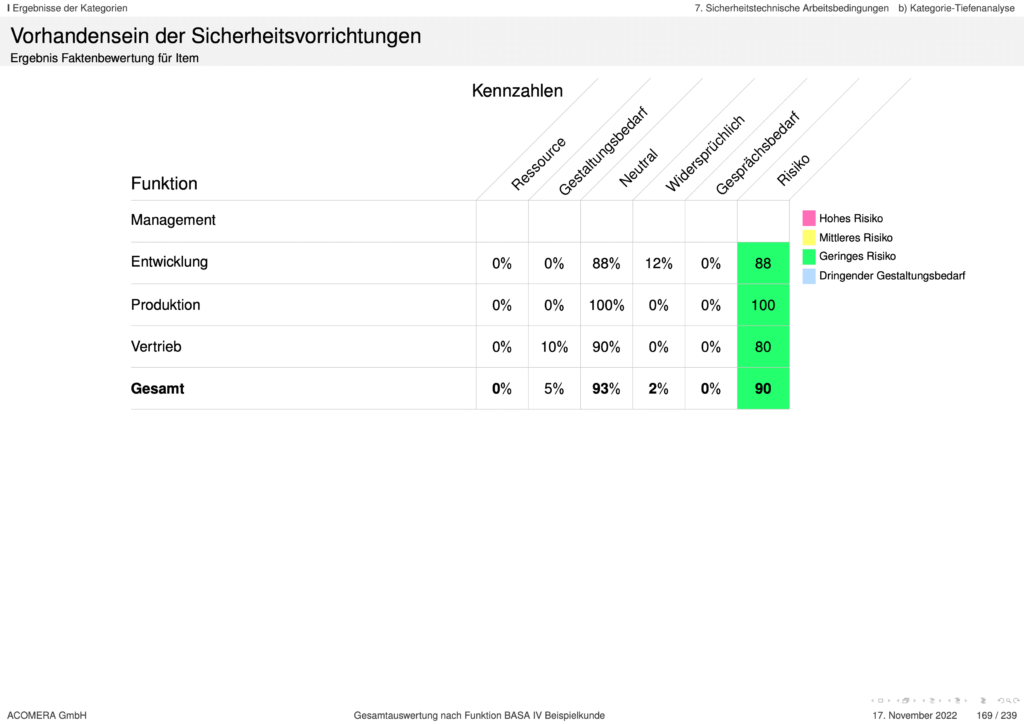The new technology to make every workplace simply healthier
Your technology partner for efficient and effective
psychological risk assessment with the BASA method ![]()
If the health of employees is impaired, the company suffers too

Direct consequences of unhealthy working conditions:
- Expansion of the work-to-rule mentality
- Increase in sick days
- Decrease in motivation
- Higher employee turnover
- Poor ratings for the company as an employer
- Difficulties with talent recruitment
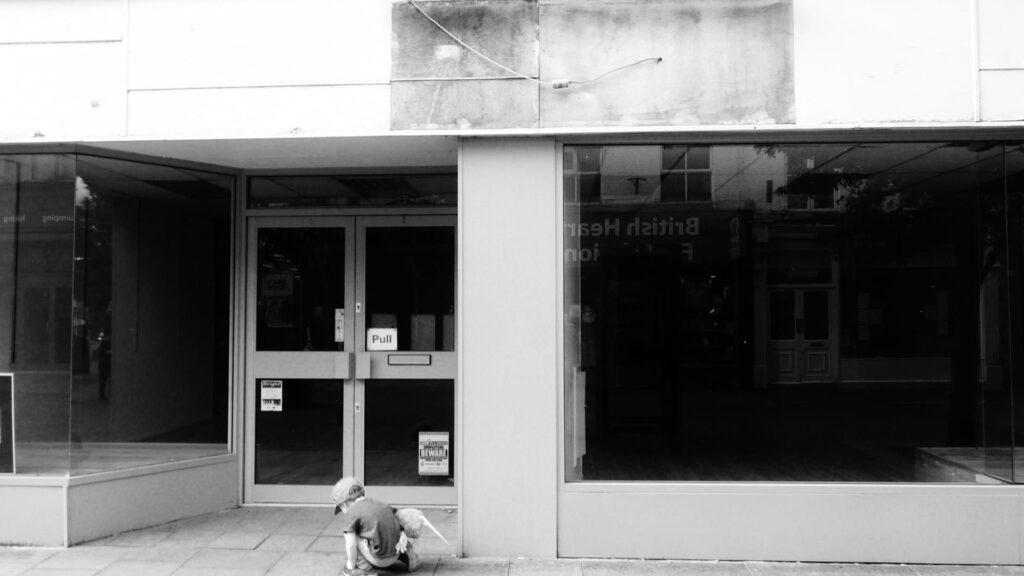
This has consequences that jeopardize the continued existence of the company:
- Dissatisfied customers
- Decline in sales
- Decrease in innovative ability
- Increase in costs
- Decline in profits / losses
If cost-cutting programs are established in response to this, possibly cutting health-promoting resources, this will trigger a downward spiral.
Healthy workplaces are not a luxury, they ensure success
A good psychological risk assessment starts with the people affected, i.e. the employees, all employees

Employees are best placed to evaluate their workplace:
Workplaces are different and are also different for the employee than for inspectors during a site inspection. In particular, the psychological aspects of the work can only be assessed by the employees themselves.
This means that only the employees can really assess their workplace. Incidentally, this also includes management, as well as external employees.

First of all, the facts must be put on the table:
A psychological risk assessment must be based on facts and must not be a wishful thinking exercise. It is therefore important to first ask employees whether a situation is actually hazardous to health (or promotes health).
Only once this has been clarified does it make sense to ask the employee’s personal perception of this reality.
The BASA procedure developed by the BAuA not only recognizes hazards, but also resources

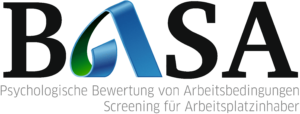
Overview of the BASA method:
- Developed by the BAuA since 2000
- Based on specifications in accordance with GDA and ArbSchG (ISO standards)
- Occupational science AND occupational psychology approach
- Cross-industry and suitable for all workplaces
- BASA IV from 2023 is up to date with the latest specifications
| Unrecognised | Recognised | |
| Resource | ||
| Hazard |
Identification of hazards and resources with the BASA matrix:
The BASA process recognizes both workplace conditions that are hazardous to health and resources that promote health.
A distinction is made as to whether these have already been recognized by the employees. BASA uses a two-part question technique for this:
- Factual review of the workplace
- Personal experience of the employees
This results in the BASA matrix, which is then converted into a BASA score including an easily interpretable traffic light scheme.
BASA covers working life from an occupational science and psychology perspective

The BASA content covers 9 categories:
Of course, not all content applies to all workplaces or employees (e.g. night shift, personal protective equipment, etc.). Accordingly, some items or categories are optional.
The history of the BASA method dates back to the 1990s and has produced numerous innovations since then

First author Dr. Gabriele Walter (née Richter) from the Federal Institute for Occupational Safety and Health (BAuA) in an interview on the history of the BASA procedure:
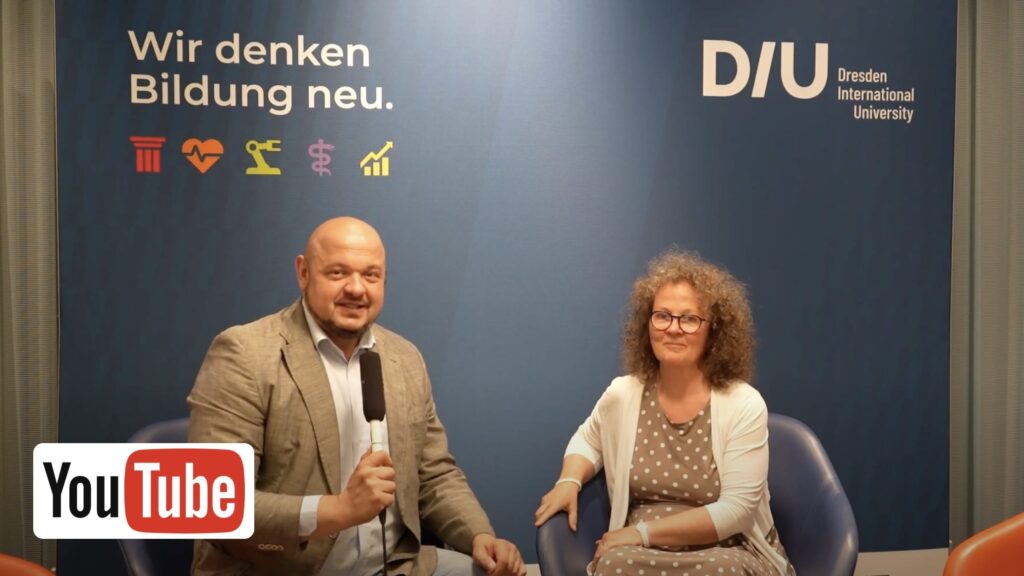
Click on the photo to open the interview with Dr. Gabriele Walter on YouTube
The new technology to make every workplace simply healthier
ACOMERA GmbH offers a high-performance digital platform for creating a psychological risk assessment

The ACOMERA platform addresses all employees at all workstations:
- No restriction on the number of participants
- Invitation by e-mail or QR code
- Mapping of the organizational structure for later evaluations
- Own items possible
- Complete implementation possible in four weeks
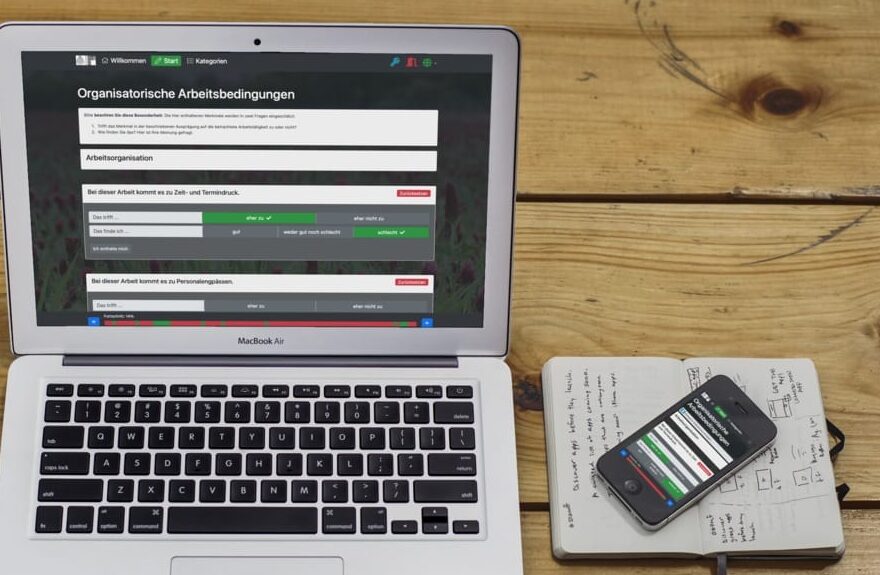
The ACOMERA platform is easy and convenient to use:
- Cell phone, tablet, PC and Mac all work
- Runs via any browser
- No APP installation necessary
- Option to change the language (German, English, French, Polish, etc.) for participants
- Automatic saving prevents data loss
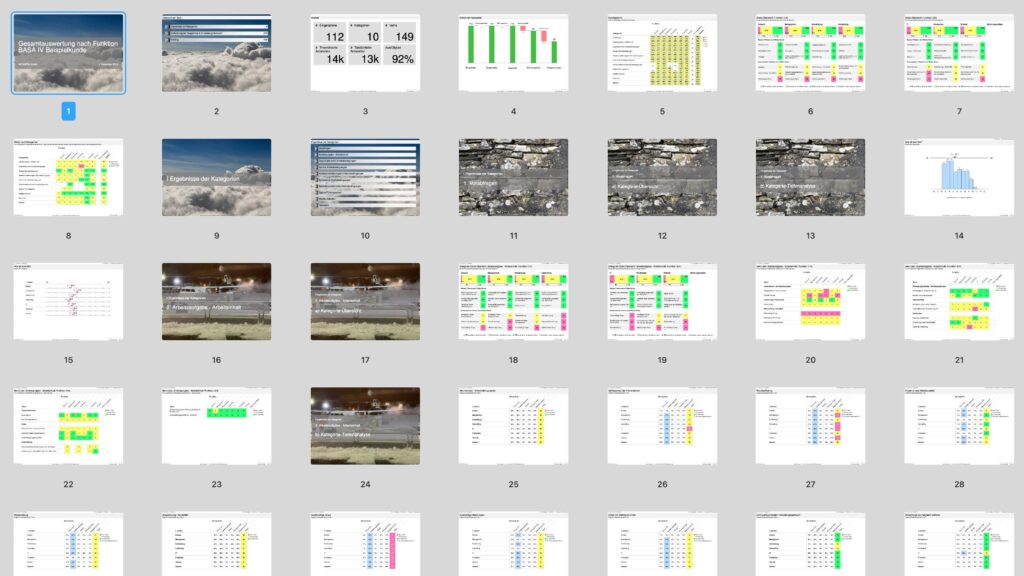
The ACOMERA platform automatically creates the evaluations as a PDF:
- Structuring of the evaluations from coarse to fine
- Comparative analyses according to traffic light scheme in red, yellow and green
- Evaluations can be broken down in different ways (e.g. by organizational unit or activity) and filtered (e.g. by location)
- GDPR compliance ensured by minimum number of responses
- Provision of the first evaluation documents within 24 hours of the end of the survey
The ACOMERA platform lives the BASA logic to the maximum
The BASA method not only offers scientifically proven content. It is based on its own logic for involving employees and deriving the risk assessment from this:
BASA Items
The special question technique regarding the applicability of a fact and the employee’s personal perception has its own logic.
In the survey, the ACOMERA platform offers a special survey item that was created just for BASA. It is much more than just a combination of two single-choice items.
BASA Matrix
The combinations of a BASA item result in resources and hazards that have been recognized or not recognized.
Each combination has a different meaning in the risk assessment. The ACOMERA platform understands these.
It also recognizes contradictory answers that need to be discussed with the employees.
BASA Score
The combinations of the BASA matrix are used to derive the BASA score on a scale between 0 and 100, which is divided into a dangerous, a problematic and an optimal range.
The three areas result in an easily interpretable traffic light scheme, which proves to be extremely practical. The ACOMERA platform automatically generates evaluations and makes intensive use of the traffic light scheme.
In addition, the optionality of some BASA items and BASA categories is supported by the ACOMERA platform: These are only shown if the corresponding preliminary questions are answered with “Yes”.
The complete integration of the BASA logic into the ACOMERA platform ensures that no manual steps are required at any point. This makes us not only fast, but also efficient.
The automatic evaluations help to quickly identify and understand hazards and resources
Comparative evaluations at a higher level according to BASA score and traffic light scheme allow you to quickly recognize the situation. Diving into the categories and item details creates further transparency.
Example 1: Urgent need for action in IT on the subject of staff shortages
Example 2: Safety devices available in production – this is good but not a resource
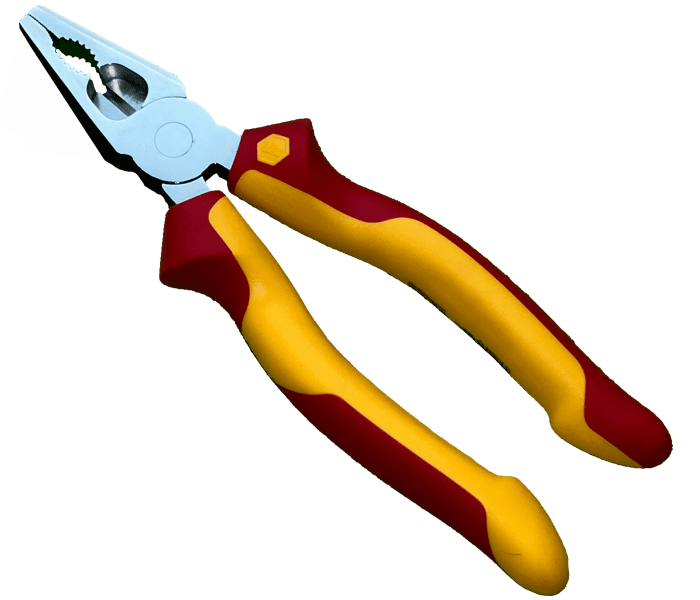
You would like to use the BASA IV in your company yourself
Do you have the necessary experience to use BASA IV in your company? Do you know how to interpret the results yourself and implement them in a value-adding way?
Then we will be happy to provide you with the technology, support you with the implementation and prepare the analyses for you. If you still need training in the sense of a train-the-trainer model, this is possible.
You offer risk analyses yourself, e.g. as part of workshops for your customers
Are you looking for a powerful tool for risk assessment and occupational safety for your own customers?
Then you’ve come to the right place: we take care of the diagnostic data collection and you gain time to work with people.

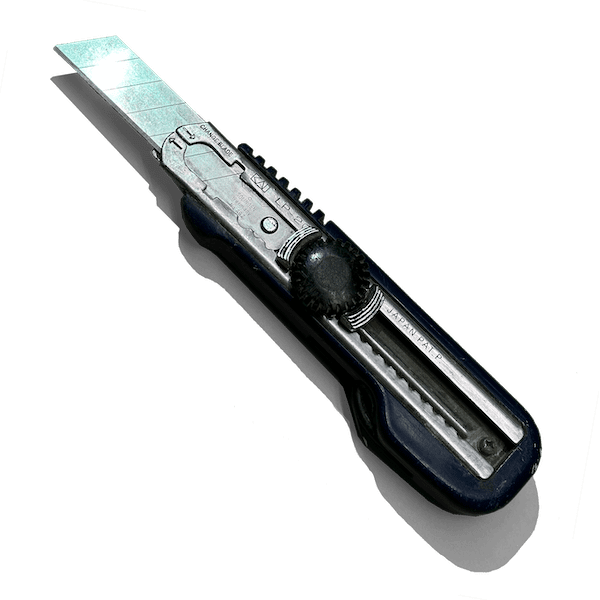
You would like to have the BASA IV carried out by our experienced consultants in your company
Do you lack the time or expertise to use the BASA IV process yourself?
This is a hurdle that we can overcome together: You, us and experienced BASA-IV consultants from our network. Trained in the use of the ACOMERA platform and experienced in the content, they can implement the survey at your company in combination with workshops and training courses, for example. A train-the-trainer model is also possible.

